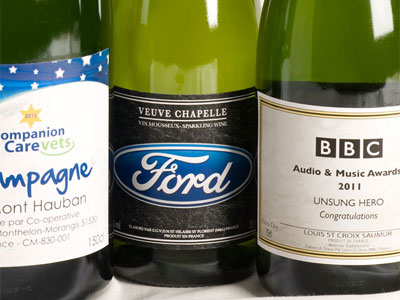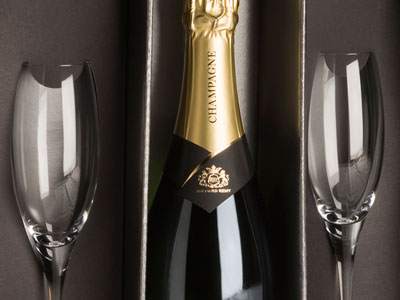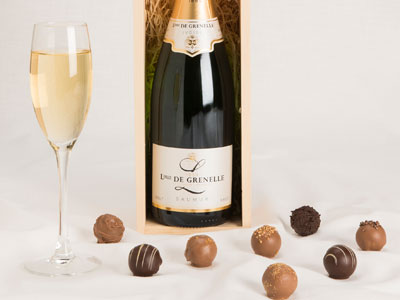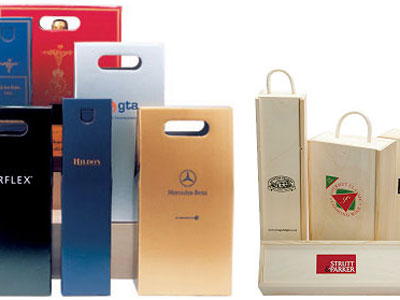 Wine is the nation’s most popular alcoholic drink, according to a new YouGov survey, with white wine the favourite among UK drinkers. But how much do you know about this delicious tipple? Karen Brimblecombe shares her knowledge and expert tips on storing and serving white wine.
Wine is the nation’s most popular alcoholic drink, according to a new YouGov survey, with white wine the favourite among UK drinkers. But how much do you know about this delicious tipple? Karen Brimblecombe shares her knowledge and expert tips on storing and serving white wine.
What is white wine?
White wine is wine without any red colour. Yellow wines, golden wines, and wines as pale as water are all white wines. They are typically made from all the grape types that are green or yellow. However, a wine can also become white when it’s made using only the juice of red grapes, not the skins; as the juice of most red grapes has no red pigmentation. White wines are often described by their acidity which tends to be more pronounced than in reds; and which is why you might say a wine is “crisp” or “tart.”
Types of white wine
The most well-known grape varieties for white wine are Chardonnay, Sauvignon Blanc, Pinot Grigio and Riesling, but there are hundreds of different grape varieties you may never have come across.
However, the following two varieties, in particular, will give you a great introduction to the world of white wine.
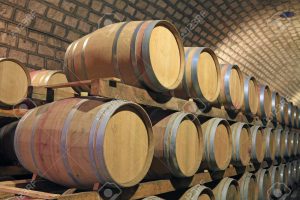 Chardonnay
Chardonnay
One of the great grape varieties, Chardonnay is used to produce the famous French white wines of Burgundy, Chablis and Champagne; as well as excellent quality wines in Australia, the USA and Chile.
Chardonnay is available either ‘oaked’ or ‘unoaked’, depending on your flavour preference. Chardonnay aged in oak barrels gives the wine a golden colour and an opulent creaminess with buttery vanilla, toffee and toast aromas.
An unoaked Chardonnay is fresher, lighter and fruitier with a zesty zing. Unoaked Chardonnay can be found in the fantastic wines from the Chablis region. The cooler climate and use of stainless steel vats instead of oak barrels to ferment the wine results in a dry, crisp wine often described as steely. Our Domaine Daniel Seguinot Chablis is a perfect example.
Sauvignon Blanc
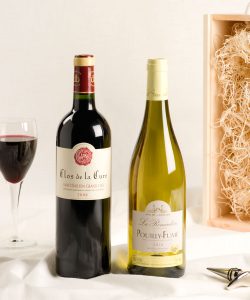 Sauvignon Blanc is one of the oldest and most highly rated white wine grapes. The best bottles originate in the Loire Valley and Bordeaux regions of France. In the Loire Valley, Sauvignon Blanc is the only grape variety that is permitted in wines described as either “Sancerre” or “Pouilly Fume”. A wonderful example of the classy Pouilly Fume wine is our Domaine Bouchie – Chatellier Pouilly Fume “La Renardiere”.
Sauvignon Blanc is one of the oldest and most highly rated white wine grapes. The best bottles originate in the Loire Valley and Bordeaux regions of France. In the Loire Valley, Sauvignon Blanc is the only grape variety that is permitted in wines described as either “Sancerre” or “Pouilly Fume”. A wonderful example of the classy Pouilly Fume wine is our Domaine Bouchie – Chatellier Pouilly Fume “La Renardiere”.
A Sauvignon Blanc that originates from a cooler climate, will have a crisp, zesty style. While a Sauvignon Blanc made in a warmer climate will result in riper grapes with tropical fruit flavours. Sauvignon Blanc wines are dry, aromatic and acidic with recognisable notes of apple and lime and herbal flavours.
Other popular white wines are:
· Chenin Blanc, which has a refreshing quality and is available oak-aged or unoaked
· Pinot Grigio, which is a light-bodied wine, with a crisp dry finish
· Riesling, which originates in Germany and is aromatic with intense fruit flavours.
How to serve white wine
Light, dry white wines, such as Sauvignon Blanc are best served cold, between 7-10 ̊ C to emphasise their refreshing qualities and acidity. To chill, put the wine in the fridge at least 2 hours before opening. Serve in a tall, narrow wine glass to concentrate the fruity aromas at the top of the glass. A longer stem will help to keep the wine cool.
White wines with more body and deeper, richer flavours, like Chardonnay, should be served lightly chilled at 10-13 ̊ C, as their aromas open up at the warmer end of the scale. Being too cold will mask the delicious flavours. To chill, put the wine in the fridge around 1 hour before opening.
How to store white wine
The ideal place for wine storage is a somewhere cool, dark, quiet and slightly damp, like a cellar, if you’re lucky enough to have one. But a spot under the stairs or in the attic could be suitable too. Strong light can adversely affect the taste of wine, particularly if the bottle is made from clear or pale glass. And the temperature at which wine is stored is very important. The ideal wine storage temperature is between 10 and 15 °C, but no great harm will come to wine stored between 15 and 20 °C, so long as the temperature does not fluctuate too much. Just ensure that the temperature doesn’t fall below -4 °C or go above 30 °C as the quality will affected. The worst place to store wine is often in the kitchen by a cooker or on top of a fridge where there are frequent blasts of hot air.
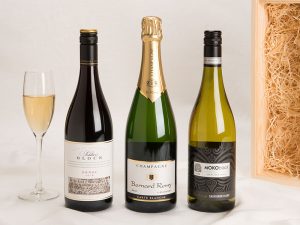 Everyday cheaper wines should be drunk within the year. Once open they need to be drunk within a couple of days. If you don’t drink the whole bottle, pop it in the fridge but use a vacuum pump and stopper to remove any air. Oxygen is wine’s biggest enemy once opened.
Everyday cheaper wines should be drunk within the year. Once open they need to be drunk within a couple of days. If you don’t drink the whole bottle, pop it in the fridge but use a vacuum pump and stopper to remove any air. Oxygen is wine’s biggest enemy once opened.
If you are investing in a large quantity of fine wine my tip would be to have it stored by professionals, in a specialist wine warehouse, where the temperature and humidity is controlled.
Choosing white wine for the perfect business gift or corporate event
At Wines Select we are passionate about wine and sharing our knowledge and experience. If you would like any advice on selecting your business wine gifts please call us on 0330 133 5135 or email karen@winesselect.co.uk and we will be delighted to assist you.

